The Structured Data also known as Rich Snippet or Schema Markup, is often referred to as the “language of search engines”. It is an authoritative vocabulary that allows search engines to contextualize, understand, and accurately match website content to relevant queries from Internet users.
Typically, when you search for any topic on Google or other search engines, their algorithms provide information that is presented in different ways
- Maps
- Statistics
- Lists ;
- Numbers;
- Etc
Indeed, the majority of these results are linked to structured data
The latter are increasingly the focus of SEOs, as they can significantly improve the way your website responds to search engines
So:
- What is structured data and what are the different types?
- Why is it important for SEO of a page or website?
- How does it work?
- How can they be used on a web page?
This mini-guide provides clear and precise answers to these questions.
Let’s go!
Chapter 1: What do I mean by the term “Structured Data”?
In this chapter, I will start with the very important basic notions to allow you to have a perfect understanding of this term.
First, here is a summary of structured data at a glance:
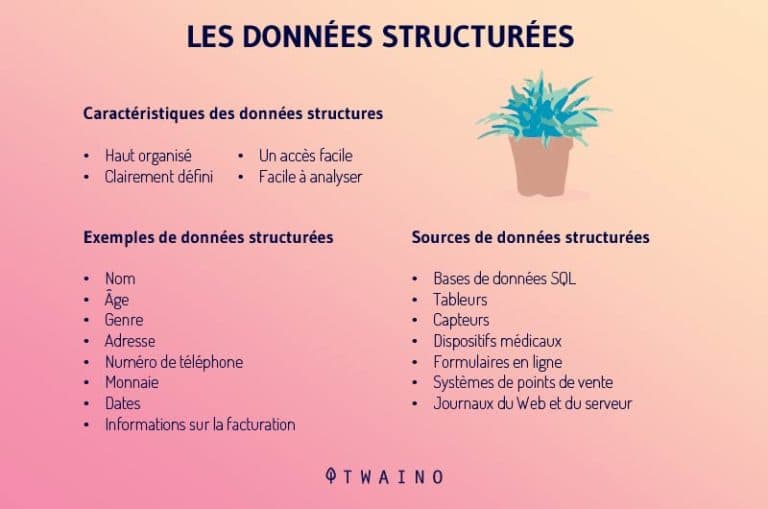
Interpreting this image, we understand that structured data can take the form of a person’s name, a phone number, or information that is visible on the screen to Internet users
But underneath, it has a character type and a storage source. Now that you have a concrete idea of what structured data is, we can address its definition without any ambiguity
1.1. Structured Data : Definition
In SEO, structured data also called Rich Snippet usually refers to the placement of specific tags on a web page to provide detailed information about the page’s content
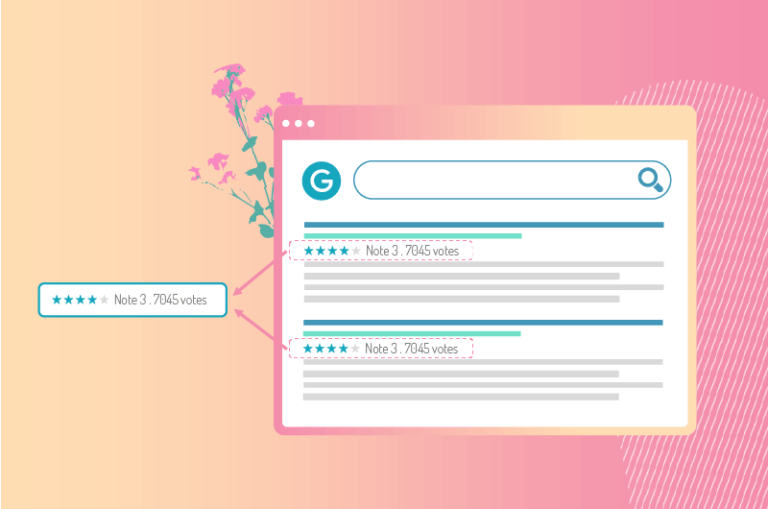
This information can refer to a person, a recipe, a series, etc. These rich snippets can therefore describe several data, numbers as well as letters
Technically, it is a piece of code injected into the source code of the page
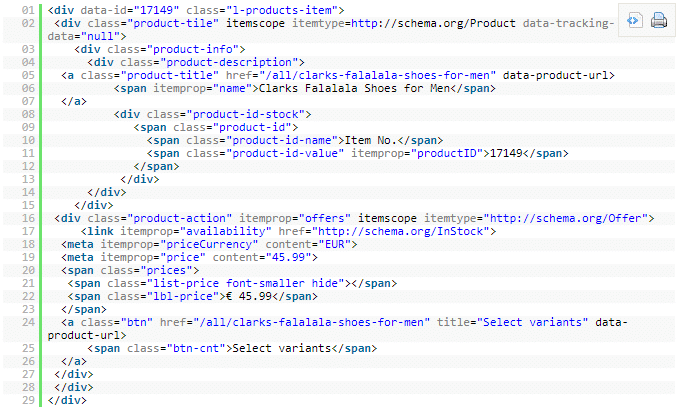
Source Sana commerce
The search engines will compile this piece of code (the rich snippets) and translate it into a more readable code

Source Sana commerce
So by providing so much additional information or explicit clues about the content of a page, this structured data helps search engines to better understand its content
Google, for example, after interpreting the rich snippets on a page, here’s how it translates them to the user’s screen
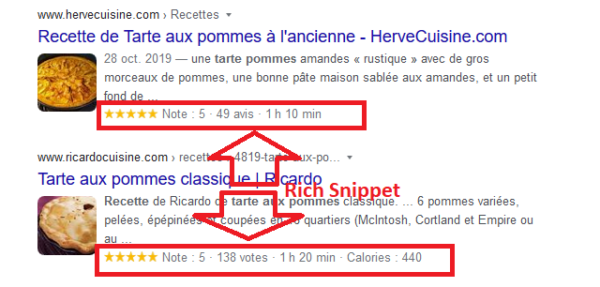
As you can see, these extra details you fill in the structured data tags allow Google to adjust how your page appears in its search results
In the SEO world, structured data (or Rich Snippet) can be referred to by several other names, including:
- Schema markup;
- Rich snippets
- Rich Content
Don’t be confused if you come across these terms, they all mean the same thing
If between us, we can communicate with human language, then in what language could Google interpret the content of rich snippets tags?
This is what we will see in the next chapter.
1.2 Structured data formats
There are standardized formats (syntaxes) of rich snippets that are supported by search engines. Here are the two most important ones:
1.2.1 JSON-LD (recommended by Google)
JSON-LD (JavaScript Object Notation for Linked Data) is a linked data format that uses vocabularies such as schema.org (we’ll see it later) to read and write structured data

Essentially, JSON-LD can be used to send information to search engines using Semantic Web.
Many Web developers use JSON-LD for the following reasons
- It is easy to add, modify and delete ;
- It is used to send rich snippet information to search engines;
- It is not mixed with the text that the user can see;
- It does not require any modification of the existing HTML code
In a simple way, structured data is the actual content you want search engines to see. Thus, JSON-LD makes it easy to pass this information to the search engine.
A simple example of Json-ld :

1.2.2. Microdata
The microdata (in English Microdata) is a way of tagging various HTML elements on a page with tags that are readable by search engines
So if you see a rich snippet that includes a publication date, the author’s name or a product price, know that all these elements are individual microdata
But the fact is that microdata must be embedded directly into the HTML source code of a web page, so it takes longer to implement and is relatively more difficult to modify and remove.
This is why the format recommended by Google for the implementation of structured data is the JSON-LD.

There is also the Schema.org vocabulary (which can be used with Microdata and JSON-LD).
1.3. Shema.org : What is it ?
Schema is a set of vocabularies that determine the appearance of rich snippets of your website to search engines
To be precise, it is a set of tags that can be added to websites to improve the way search engines perceive and display your page in search results.
This set of tags tags is grouped in a large database of tags created by the collaboration of the four major search engines (Google, Bing, Yandex and Yahoo) so that the information can be shared and used in different areas.
This has resulted in the creation of à Schema.orga website dedicated to the support of a set of tags to facilitate the tagging of structured data on web pages.
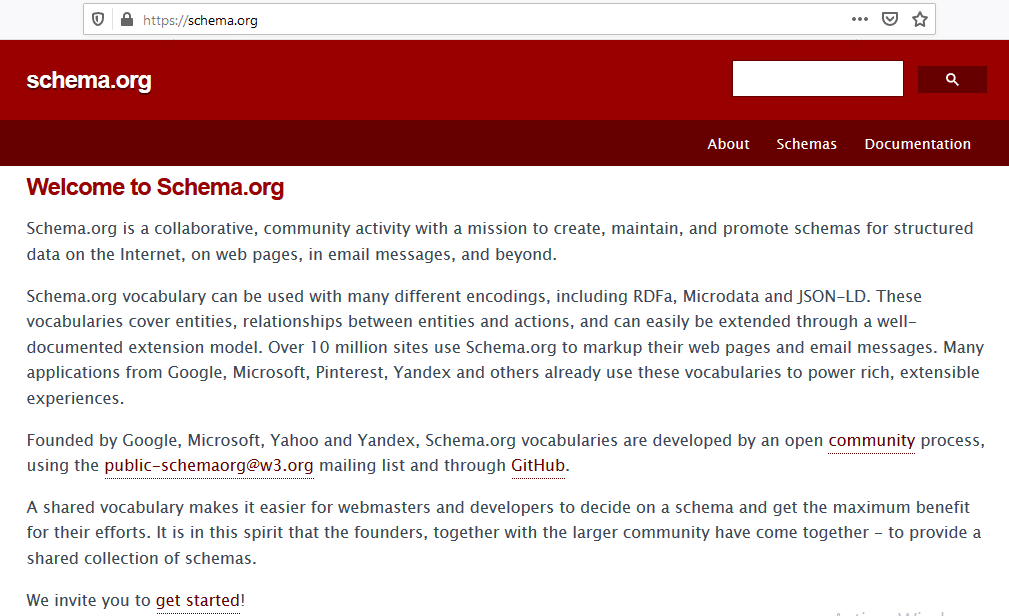
Since its launch, SEO gurus, bloggers, marketers and developers have been applauding the value this approach brings to improving organic search results for both users and publishers.
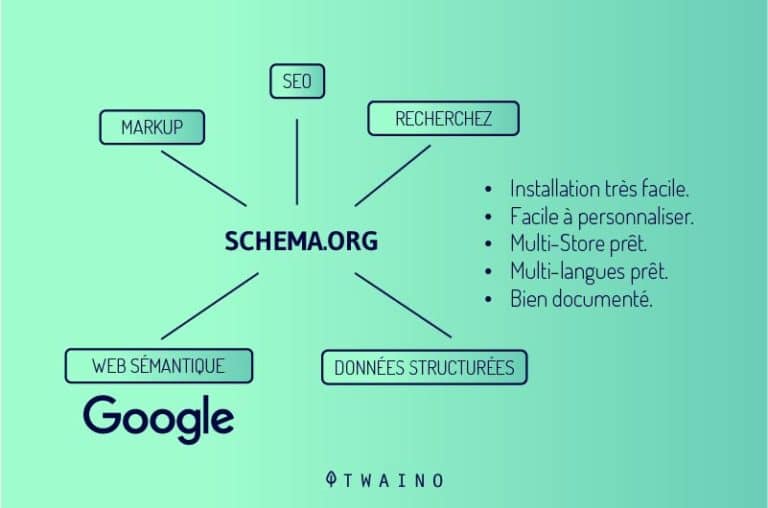
For any computer novice, just know that using schema.org (the vocabulary list) with JSON-LD (the grammar rules that dictate how the vocabulary should be used) is currently the most popular combination.
If there is structured data, that would mean that there is also unstructured data! So let’s see the difference!
1.4. Structured Data and Unstructured Data: What is the difference?
The difference is simple and intuitive
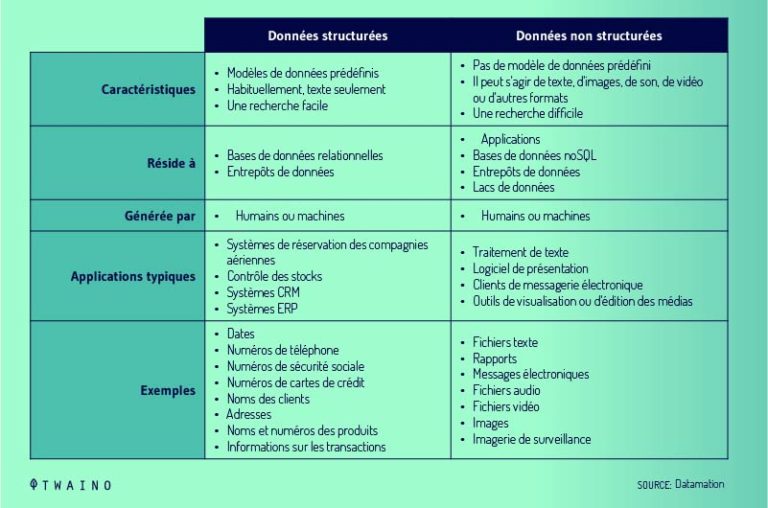
Structured data is organized datawhile unstructured data is unorganized datasimply put
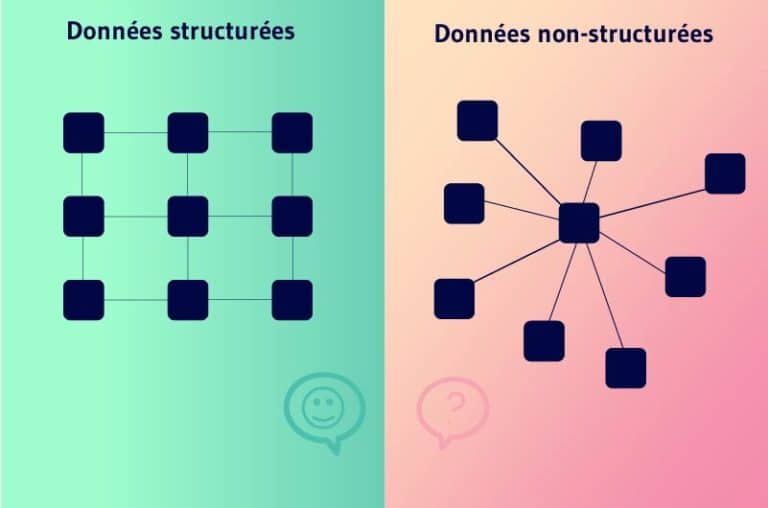
The following sentence is a good example of unstructured data: “Adam Smith is a software engineer for Microsoft.”
The reader, whether a human or a robot, does not need to categorize all this information
The structured datastructured data, on the other hand, organizes all the properties and types in advance. For example, “Adam Smith” is the name, “Software Engineer” is his role and “Microsoft” is his company.
Now we will see the different types of rich snippets and the benefits they bring to the sEO of a website.
Chapter 2: What are the types of structured data and why are they important in SEO?
In this chapter, I will discuss two main points:
- Some main types of rich snippet and five other essentials that a beginner should at least use on his site ;
- The influence of schema markup on SEO.
2.1. Structured data types
When using these enriched extracts, you will face several typesincluding :
2.1.1. Local business
This type of rich snippet will enhance your local ads and is ideal for websites that have
- Offices
- Branch offices; and
- Locations
- Etc
The schema code includes:
- Physical address
- Hours of operation
- Contact information
- The URL of that specific location page on your site
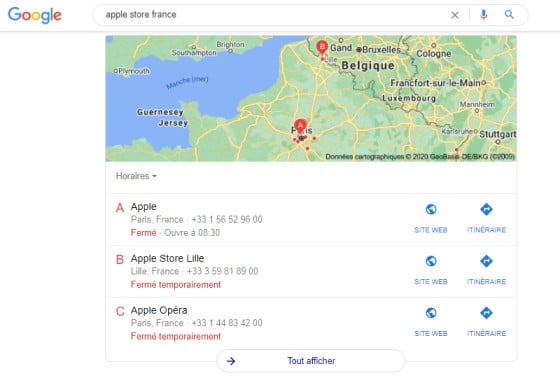
To improve this type of structured data and the overall SEO strategy, it is recommended to have a separate page for each business location
2.1.2. Breadcrumb List
This type of schema markup gives your site the ability to generate breadcrumb snippets in the SERPs

Having a breadcrumb trail on your site is a tactic to reveal the architecture of your site, which helps both search engines understand your website, but also users understand the hierarchy of services you offer
2.1.3. Service
This type of rich snippet defines the service(s) offered by a company. It includes:
- The type of service
- The description (of the company) of the service provided;
- The geographical area of the service (if applicable)

The benefits of service tagging can include increased credibility within the search engine and increased quality of traffic to your website’s service pages.
2.1.4. Articles
This type of rich snippet displays
- The title ;
- The image;
- The publication date.

The tagging of these can help display the content in Google News and provide in-depth article search suggestions.
2.1.5. Reviews or ratings
This type of structured data works best with e-commerce product reviews

2.1.6. Other
- Carousel;

- Software application ;

- Etc.
2.2. 5 examples of structured data that even beginners can use
As a newbie to using rich snippets, it’s helpful to have some examples of inspiration.
Here are 5 main ones to check out:
2.2.1. Company contact
With thebusiness contact structured data snippetyou can include important information about your company
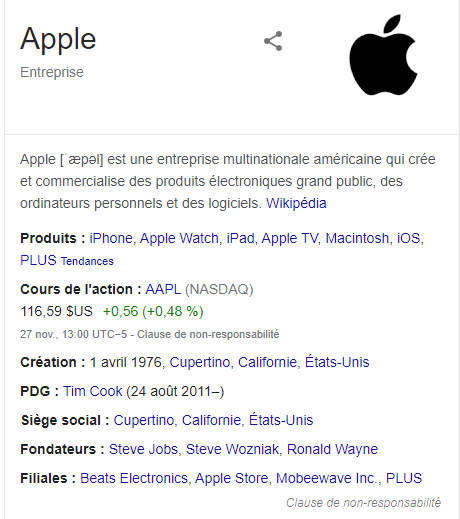
From your website to your social media profiles, you can offer users quick access to the data and links they want.
2.2.2. Product
L’structured product data extract helps your company share vital information with buyers.

You can highlight:
- Product pricing
- Reviews
- Availability.
In addition, you can use schema markup on all your product pages.
2.2.3. Search box for related links
With thestructured data extract of the related links search boxsearch box, your company can help users find what they need on your site even more easily from the SERPs
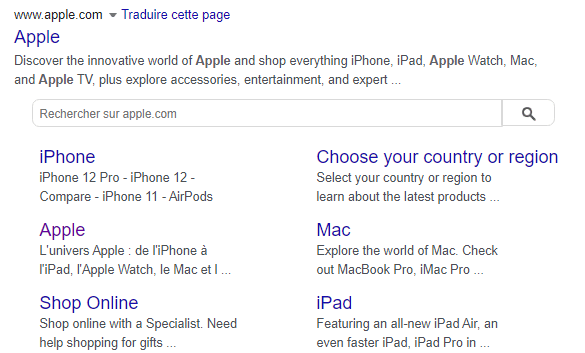
This type of rich snippet can also help your SEO strategy by providing valuable keyword data.
2.2.4. Video
L’structured data snippet of video can occupy a prominent place in search results, which can create a traffic boost

This schema markup also gives users quick answers to complex questions, such as:
- Emptying a vacuum cleaner
- Cleaning a gutter;
- Updating computer settings;
- And so on.
2.2.5. Events
With thestructured event data extractyour business can highlight upcoming events
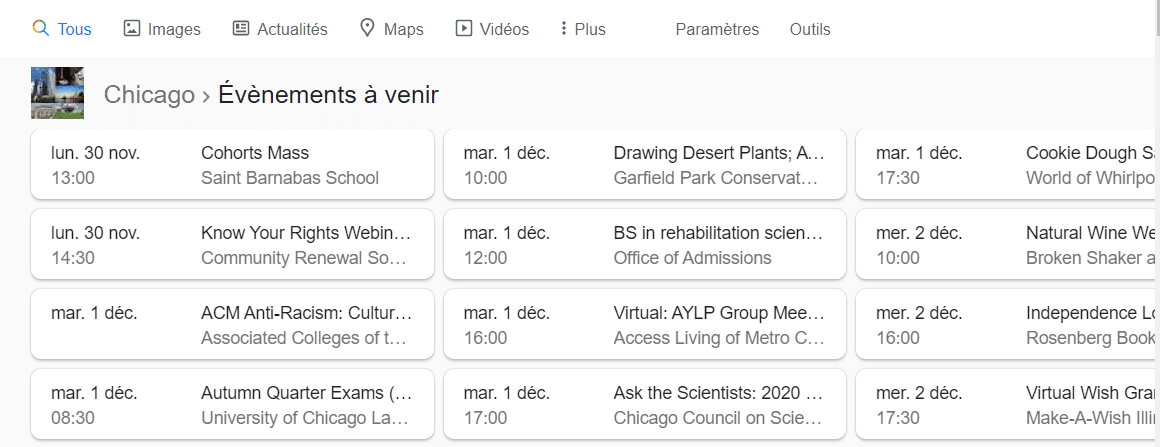
This type of enriched snippet offers tremendous value to local businesses because it highlights:
- Location
- Time of day;
- And the importance of the event.
Whether you’re hosting a sale, a conference or a class, you can be at the center of search results with this schema markup.
2.how does structured data help with SEO for a website?
In this section, we will see the importance of structured data for SEO on two different levels.

First, on the technical level and then on the human level.
2.3.1. On the technical level: Structured data makes it easier for Google to understand your page
As mentioned above, the rich snippets help search engines to have a good understanding of your website content
This level of understanding makes it easy for Google to determine if your page offers value to users, which can help it rank better in search results.
Therefore, websites or pages containing rich snippets will rank higher by default than those without schema markup. On the technical levelthis is how structured data helps SEO.
2.3.2. On the human level: Overview of your page in the SERP for users
Rich snippets also help in another way. Since the search engine now understands your site better, it can display it in the search results with more information
Thus, displaying important basic information about your site or page directly in the SERP allows users to quickly determine which option to choose without having to open each result first.
In fact, with your site displayed in the SERPs with more details, you will have a better chance of generating more organic traffic because, visitors are more likely to click on search results with details than on plain text.
This increase in click-through rate will lead to a decrease in bounce rate, which in the long run will help to further improve your SEO ranking.
2.3.3. Let’s recap with a practical case
Search engines use structured data to improve the appearance of your search results, for example, with more detail, often called rich content.
A perfect example might be : The search result for a DVD you sell
Rather than just listing your website and the title of the movie, a rich search result can also include:
- The highest-billed actors
- The price of the DVD
- How long the movie plays
- The star rating of the product
- DVD cover image
All of this information comes from your website’s structured data. When done properly, search engines can easily find this information and link it to customer searches, which will motivate customers to click through to your site.
In short, this ensures good rankings and means that your search results also look more professional and attractive to customers
These SEO benefits of rich snippets make them an essential part of your search engine optimization strategy.
Chapter 3 Structured Data How does it work ?
Understanding how structured data works requires a reminder of the requires a reminder of how on how sites appear in search results.
In order for your website to appear in search results, crawlers (like Google Bot) must firstcrawl and index it

When crawlers crawl your website, they compile the information it contains, from its text to its images to its structured dataand index them all. The search engine then interprets this information using its algorithm.
However, deciphering a page is not always easy, which is why search engines continue to update their algorithms
Indeed, the adoption of rich snippets can facilitate the work of search engine crawlers. With these elementswith these elements, you provide immediate and easy to follow information about your page.
Instead of guessing what your page is about, a search engine can determine if your page includes one of the following schemas: :
- Recipe;
- Instructional guide; and
- Reviews ;
- Pricing;
- Phone number ;
- FAQ;
- Event ;
- Etc.
Then, the search engine uses this information to streamline the user’s search.
For example, if someone is searching for a key recipe for key lime piethey probably have some preferences that they did not include in their initial search
For example, they may need a recipe that takes less than an hour or that also offers flavor!
The rich snippet can provide all of this information for a simple search like: “key lime pie recipe”.
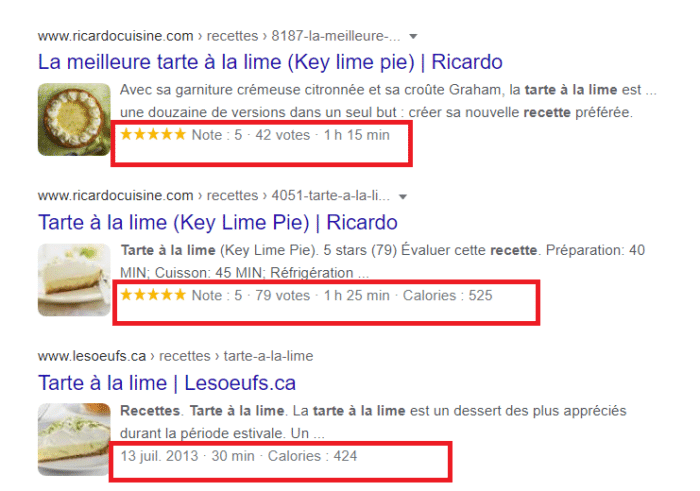
In the rich snippet example above, for example, you can see that Google includes the following:
- User ratings of each recipe;
- The cooking time for each recipe;
- The amount of calories for each recipe.
Without shema markup, Google will not be able to reliably provide this information. Nevertheless, when we talk about how rich snippet worksit is worth mentioning that Google does not always adapt its search results
Also, even if you include structured data for a page, Google may not add it for various reasons, which we will see later.
Chapter 4 Structured data: How to use it and what are the best practices?
4.1. How to use Rich Snippets in 4 steps?
Are you ready to use rich snippets on your company’s website? Start with these four steps:
4.1.1. Choose your page
Before you start adding structured data, you need to decide which page should benefit from it.
For example, if you have a procedure article that teaches readers how to clean gutters, you can use the rich snippet of procedure on that page
In comparison, if you have a blog post that compiles all of your company’s recent events, you can ignore adding schema markup.
Also, get in the habit of tracking your rich snippet efforts, especially for updating old pages
Creating a Microsoft Excel or Google Sheets document can help. For example, you can list:
- THE URL
- Structured data added;
- And the date of the update.
4.1.2. Select your structured data
Next, you will need to select your enriched snippets. In some cases, steps one and two of this process may overlap
When compiling pages, for example, you can select the type of rich snippets you want to use. Choose the method that works best for you and your team.
You can take a look at all the types of schema markup available in the Google search gallery to get a clear idea.
4.1.3. Open the structured data markup wizard
Once you have selected your pages and rich snippets, you can start coding them.
With google’s structured data markup wizardstructured Data Markup Assistant, the process is quite simple

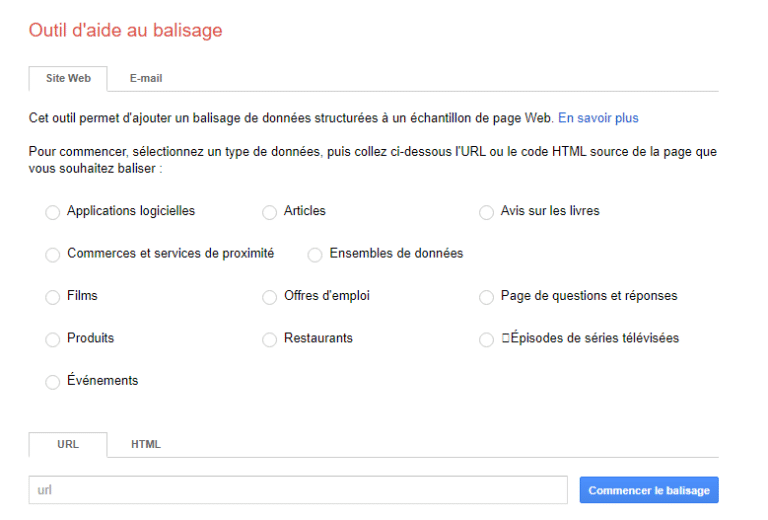
If you want to use structured data on email communications, such as for flight or hotel confirmations, you can also use this free tool.
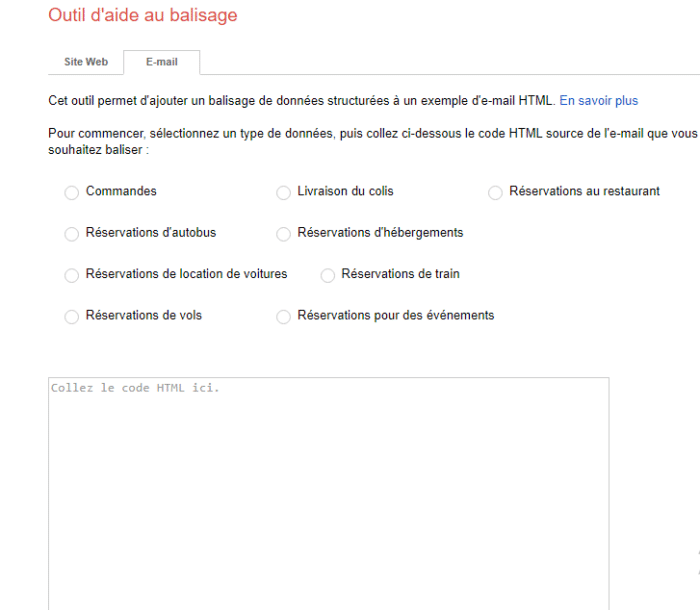
Here are the steps you need to follow in the structured data tagging tool:
- Select your rich snippet type such as an event or a product for example;
I select Article in my case:
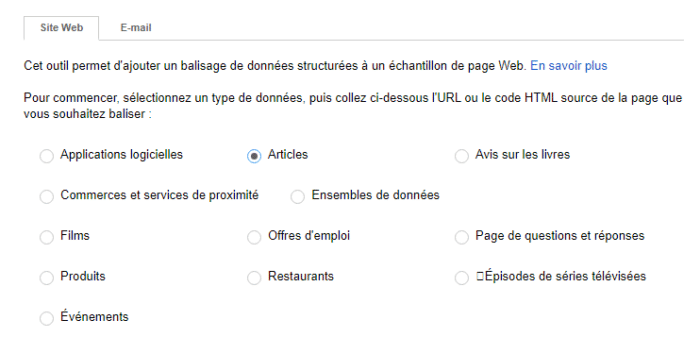
- Add your page URL or your page HTML code;
You have the choice. I add thePage URL in my case :

- Finally, click on “Start tagging“.
After your web or HTML page has loaded, you can begin the following steps:
- Highlight the appropriate text;
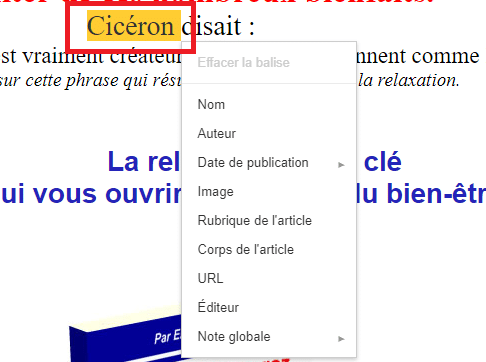
- Select an appropriate tag from the drop-down menu;
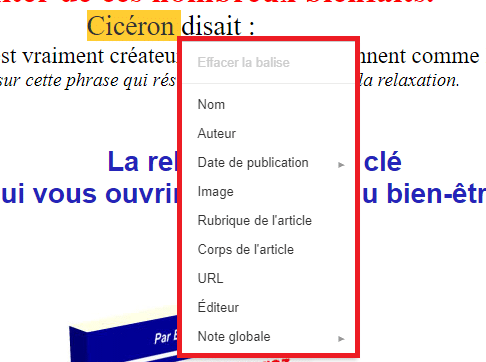
- Click on “Click on “Add Missing Tagsclick “Add Missing Tags” to manually insert tags that you cannot highlight;
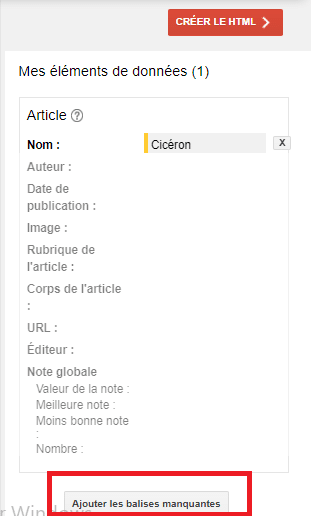
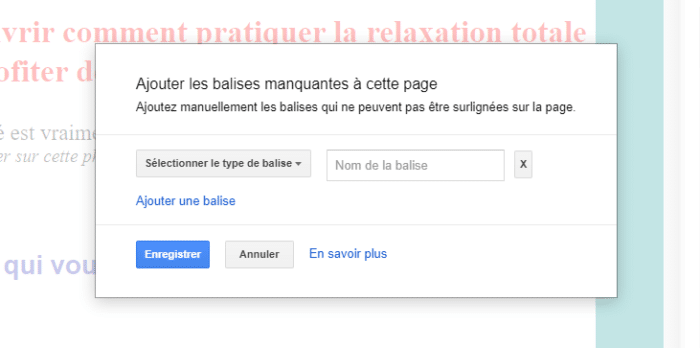
- Click on “Create HTML“.
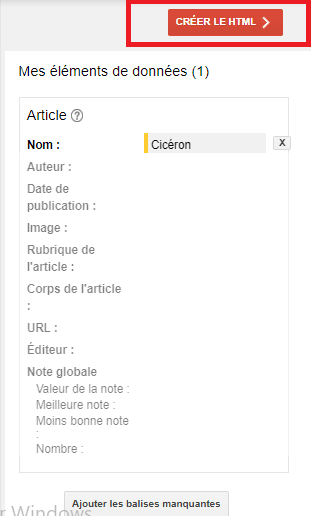
Google will then load your structured data in one of two formats:
- JSON-LD : Recommended by Google for embedding rich snippets, JSON-LD is a JavaScript notation. You must embed this code in the or of your page
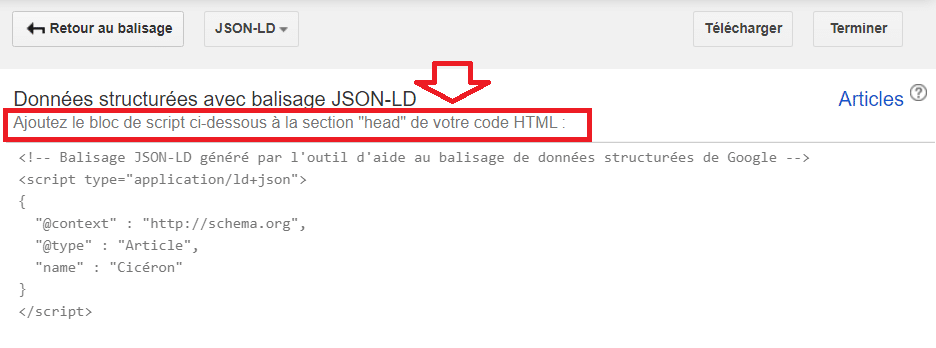
As mentioned above, Google prefers this format because it can read the data, even when it is dynamically inserted by JavaScript code or an embedded widget.
- Microdata : Like JSON-LD, you can use microdata in the or of your page. But, unlike JSON-LD, microdata is an open community HTML specification rather than a JavaScript notation.
While you can use microdata, you should stick to Google’s preference of the default JSON-LD.
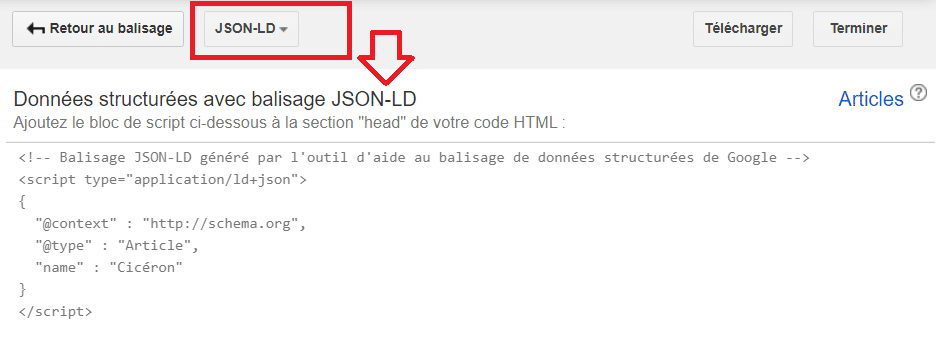
Now you can select ” Finish “or ” Download “.
The option ” Finish “option will provide your team with useful information about adding your schema markup to your page. It appears as a pop-up:
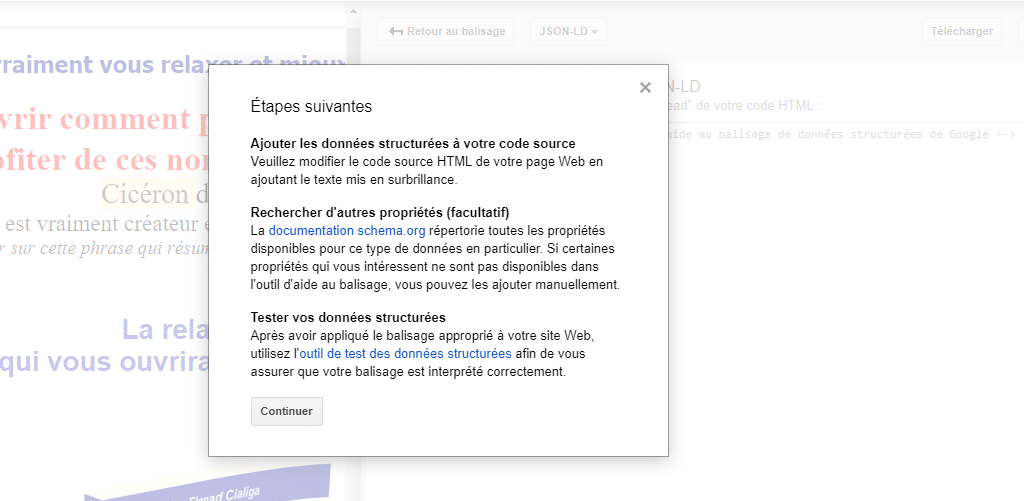
Once you have reviewed this information, click ” Continue “and then click on ” Download “to get your structured data.
The file will then download as an HTML file. You (or your developer) can then copy and insert this markup into your page. Remember that this code snippet will be placed in the or of your page
If you are unable to add this code, try asking your developer for help. Once your rich snippets have been added, you can upload your page again.
4.1.4. Test your structured data
Testing is an essential part of structured data.
If you format or copy your rich snippets incorrectly, Google will have trouble understanding them
As a result, Google’s confusion can lead to lower rankings, which can hurt your organic traffic and generate incorrect snippet information in search results.
Fortunately, Google makes it easy to check your rich snippets with its structured data testing tool :
- Open the test tool;
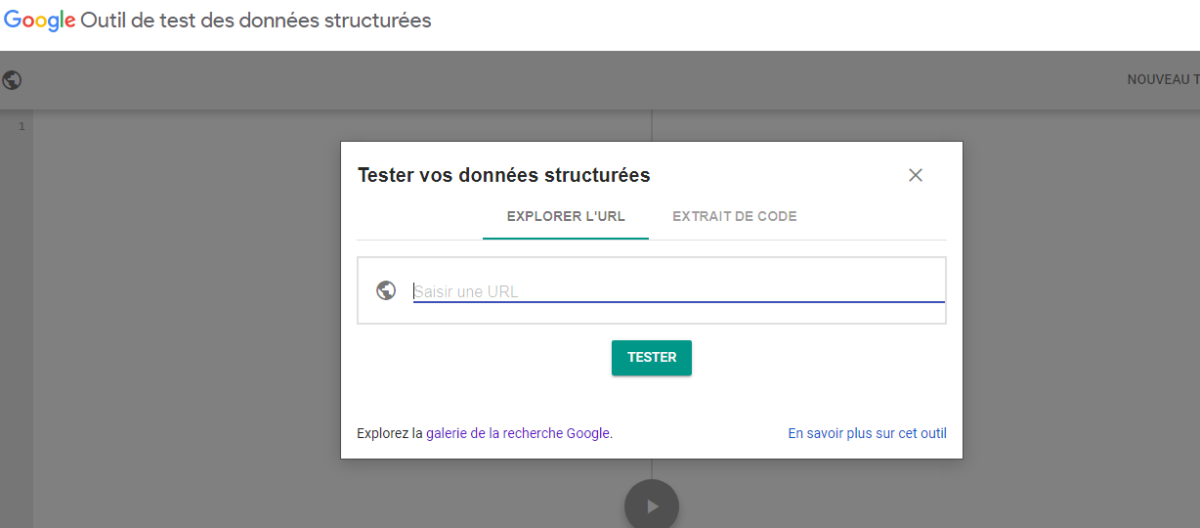
- Enter theURL of your page or a code snippet of structured data that you want to test;
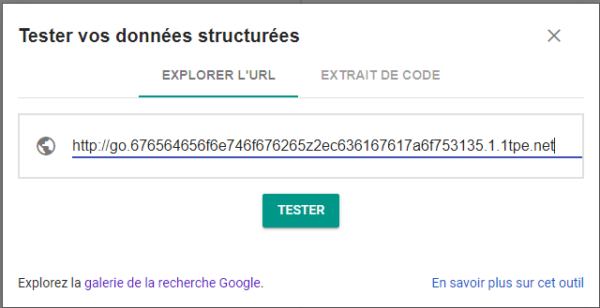
- Finally, click on “TEST“
Google will then provide a side-by-side comparison of your page.
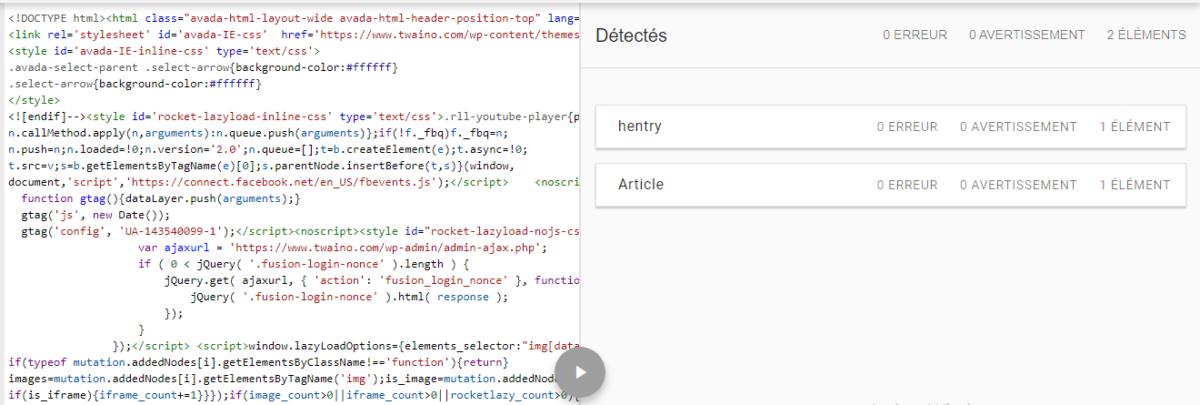
The left side will show your HTML code or a snippet of rich snippets. Meanwhile, the right side will include a list oferrors, d’warnings andelements
It will also display structured data snippets, such as the recipe or product, if they are detected.
If you wish, you can preview each element of the rich snippets to see how they appear in the search results.
If you spot any errors, you can return to the Structured Data Tagging Assistant and make changes
You can also refer to schema.organ industry resource for rich snippets that goes beyond Google. It does however include markup for rich snippets supported by Google, such as recipes.
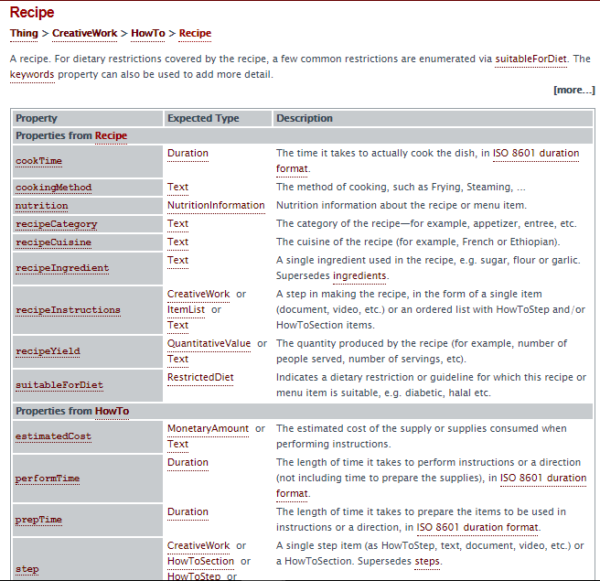
You can use schema.org to examine your structured data and add the necessary markup.
Once you have updated your markup (if necessary), you should repeat the testing process
If you continue to encounter errors and warnings, contact your developer to see if they can help. A specialized SEO agencyagency, such as twainocan also help.
This step-by-step process may seem daunting, especially at first.
However, as you gain experience, it will become a quick and easy process to add structured data to your pages. If you want an easier solution, there are tools to streamline the process.
If your site is on the WordPress CMS, for example, you can use the free plugin Yoast SEO plugin to add your rich snippets.
4.2. Rules to remember when using structured data
Before listing the 5 good rules, let’s first talk about the common mistakes to avoid when using rich snippets.
4.2.1. What are the mistakes to avoid?
Note that even if your rich snippet is properly configured according to the structured data testing tool you used, no search engine guarantees that it will be successfully generated for your page.
There are several reasons why this might happen:
- Your rich snippets do not accurately represent the main content of the tagged page;
- The schema markup is faulty and your testing tool could not detect the error;
- The content referenced in the structured data is hidden from your site visitors (this does not apply to websites that require a subscription for users to see the full content of a page) ;
- The website page does not follow any of the search engine’s technical guidelines.
In short, as with any SEO tactic, you should avoid black hat practicespractices, such as keyword stuffing or content masking.
4.2.2. What are the five best practices to follow?
To get the best results with structured data for SEO, don’t forget to follow these five rules :
- Use rich snippets when they represent the main content, rather than just part of it;
- Make all rich snippets (example: cooking time) visible to the user;
- Add rich snippets in JSON-LD, microdata or RDFa format;
- Avoid using access control methods, such as noindex, on pages containing rich snippets;
- Apply structured data to appropriate content, such as ”recipes for recipes” and not ”recipes for tutorials.
Chapter 5: Other Questions Asked about Structured Data
5.1. What is structured data or Rich Snippet?
The rich snippets are the information composed of specific tags in the sources of your pages and which aim to help search engines (especially Google) to easily interpret the purpose of the page.
5.2. What is the purpose of structured data?
Rich snippets are a way to provide detailed information about a page on your website to Google. Google will then use this information to deliver rich and informative results to users. They love these rich snippets!
5.3. What is structured and unstructured data?
Structured data represents clearly defined data types, while unstructured data is usually stored in its native format. In other words, rich snippets exist in predefined formats, while unstructured data is in a variety of formats.
5.4. What are perfect examples of structured data?
Examples of rich snippets include: Names, addresses, dates, credit card numbers, geolocation, stock information, etc. Rich snippets are highly organized and easily understood by robots.
5.5. What are perfect examples of unstructured data?
Unstructured data represents all things that can’t be as easily categorized and fit into a neat box: Photos, graphic images, videos, streaming instrument data, web pages, PDF files, PowerPoint presentations, emails, blog posts, wikis and word processing documents.
5.6. Where is the structured data stored?
Rich snippets are typically stored in data warehouses and unstructured data is stored in data lakes. Both have potential for cloud use, but structured data requires very little storage space unlike unstructured data which requires more.
5.7. How to integrate rich snippets?
To integrate structured data into your site, you have two options: Use the JSON language (recommended by Google) or use classic markup. Would you like to know more? A documentation is provided by Google on the site Schema.org to explain this topic.
5.8. What is the interest of structuring data perfectly?
Structured data represents the information that will allow the robots of the different search engines to have a good understanding of the content of a website. This means that a lot of this information will appear directly in the search results in order to locate the Internet users.
5.9. What are the structured data formats?
There are different formats of rich snippets nowadays, but here are the most common ones:
- Microformats;
- Microdata ;
- RDFa;
- JSON-LD.
5.10) How is the data structured to be used?
Structured data is specified by code in a special format to make it easier for search engines to understand. After reading the code, the search engines use it to make the search results appear in the most beautiful way.
5.11. what is the format of a file?
A format is the dimension that characterizes an object, in particular: a book, a picture, a sheet of paper, etc.
Here we are at the end of our guide.
In a nutshell
Businesses looking to gain traffic, leads and sales from their website can’t ignore structured data.
With it, you optimize your site not only for Google or any other search engine, but mainly for users
This optimization can bring changes on your positioning in the search results, hence the increase of organic traffic.
I hope that after reading this mini-guide, you have a perfect command of rich snippets and you are now able to implement them on your website!
See you soon!



